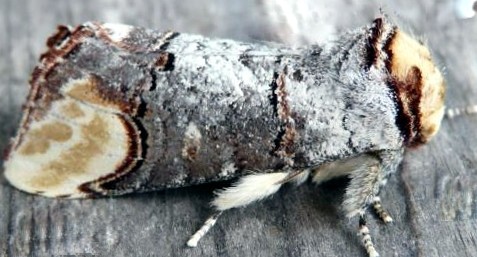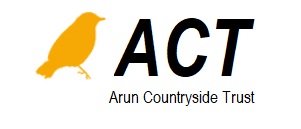There hadn’t been any glow-worms on the track the night before, only Venus and Jupiter splendidly approaching their near-conjunction in the western sky, half a moon, and a satellite spidering past. I walked the same track early next morning to a cottage in Binsted Park, within Binsted Woods, where a friend had set up his moth trap overnight. By the time I arrived my shoes were soaked with dew, but someone was out to wave me on and we gently approached the moth trap together.
The moth trap is an open-topped wooden box, with a sloping arrangement of egg boxes inside, under two Perspex sheets. A bright light mounted on the top attracts moths overnight, and they can get in but do not find their way out. When you come to dismantle the trap in the morning, the moths are quiescent, and will cling to your finger, quite still, before waking to fly away. I had seen the moth trap dismantled before, on the top of the South Downs, and remembered vividly the extraordinary, enormous privet hawk moth, with its pink and black stripes, sitting on my hand. You think of moths as little brown or grey scraps batting on the window, and I was unprepared for their bright colours. No privet hawk moths this time; but as we got nearer I saw several small birch twigs on the white sheet surrounding the trap, and knew they were moths.
Their beautiful disguise, so exactly like a little piece of silver birch, with an illusory chopped-off end at the tip of each wing, the right woody buff colour, almost like a pencil sharpened with a knife, was not working on the white sheet, so they needed to be placed somewhere safe before birds became interested. I admired one on my hand, watching it open its wings, then moved it onto a leaf and put that under some nettles. The chopped-off bit is surrounded with a thin line which mimics a layer of bark, and the front end is the same buff colour, adding to the illusion. Apparently they are ‘buff-tips’ – a prosaic name for an astounding piece of mimicry.
The entomologists had arrived with their tubes and moth books, and twenty or thirty different kinds were identified, though some were TWTTs or ‘twits’ – ‘too worn to tell’. Moths are often very short lived, so, many of the species seen on this night of 23-24 June would be different from the ones found here a month earlier or later. I went back to look at ‘my’ buff-tip a few times – it had not moved. I hope it found a birch tree to hide on more successfully. The moth book said there was little variation in buff-tips; but a quick comparison of the one on my finger with the other three made me think otherwise. Each ‘twig’ was a bit different. Perhaps it was simply the difference between closed wings and nearly-closed wings – giving a more ragged outline – but this helped the illusion.

The photographs and preliminary identifications will be checked with an expert, and the records added to the expanding record lists. This huge and under-surveyed area south-west of Arundel is gradually becoming better known through MAVES. Right in the heart of it, for a few moments, as my birch twig sat on my finger, I had seen a pause in the endlessly ingenious tumble of eat or be eaten, cycling through millennia. Part of the cycle myself, I felt very small, but also very lucky to be sitting outside, as the summer sun rose, and the cuckoo called in the trees, redolent of childhood summers, scraped knees and cricket teas.
Emma Tristram
